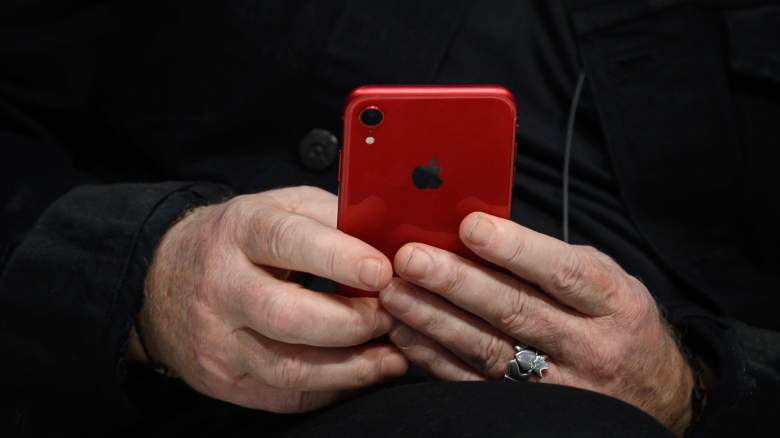
Coronavirus is spreading rapidly across the globe, and people are wondering: can you contract the virus from your cell phone or headphones? The answer is yes.
Dr. Kristen Gibson, an associate professor of Food Safety and Microbiology at the University of Arkansas, tells Heavy, “Your phone and headphones are surfaces and viruses including coronavirus can be transferred to these surfaces. If you touch a contaminated surface and then touch your phone then the virus could be on your phone and potentially transmitted to you if you touch your face.”
A recent study shows that Coronavirus can live on a plastic surface for up to 72 hours, according to NPR. (Read the study here.) While studies by the WHO suggest the estimated survival time of Coronavirus to be “a few hours to a few days”, this study is the first that tests the virus that causes the current pandemic, according to NPR.
The CDC Says a Phone Is a ‘High Touch’ Surface
The CDC considers cellphones a “high-touch” surface, along with counters, tabletops, doorknobs, bathroom fixtures, toilets, keyboards, tablets, and bedside tables. They recommend cleaning “high-touch” surfaces every day.
Dr. Gibson tells Heavy, “I think the biggest concern are multi-user touchscreen devices. Your own personal phone/headphones are not necessarily high risk unless you are sharing with other people. There are disinfecting wipes that can be used on devices that contain isopropyl alcohol (needs to be greater than 60%) though alcohol is not as effective against viruses as, say, chlorine bleach.”
The New York Times recommends using a gentle wipe with 70% isopropyl alcohol to sanitize your phone. Apple suggests Clorox disinfecting wipes.
The New York Times writes, “… don’t forget your phone case. Wipe it down, in and out, through and through. Let it dry before reassembling it. You might also consider changing a bit of your behavior. AT&T suggests sharing photos through texts, instead of passing the phone around, and using devices like headphones and technology like Bluetooth to keep your phone away from your face.”
The Virus Is Most Commonly Spread Through Respiratory Droplets
The Washington Post acknowledges that while it’s possible for a person to become infected a day after someone has touched a surface or spread the virus to a surface, it is much less likely than in the first couple of hours after a sneeze. The most common way for the virus to spread is through respiratory droplets that are produced when a person coughs or sneezes, and then inhaled into the lungs of those nearby.
Vincent Munster, the chief of the Virus Ecology Section of Rocky Mountain Laboratories, tells the Washington Post, “The risk of becoming infected via these routes of transmission reduces over time… That window of becoming infected is highest in the first 10 minutes, or one hour or two hours.”
As of now, social distancing is being enforced to stop Coronavirus transmission. This practice typically means maintaining at least six feet between you and the next person.
Nancy Messonnier of the Centers for Disease Control and Prevention, tells Stat News, “As the trajectory of the outbreak continues, many people in the U.S. will at some point, either this year or next, get exposed to this virus… And there’s a good chance many will become sick.”
Taking precautions like washing your hands, avoiding crowds, using hand sanitizer, avoiding touching your eyes, nose, and mouth, and stocking up on medications and groceries are recommended.
READ NEXT: Can You Get Coronavirus From a Public Restaurant?